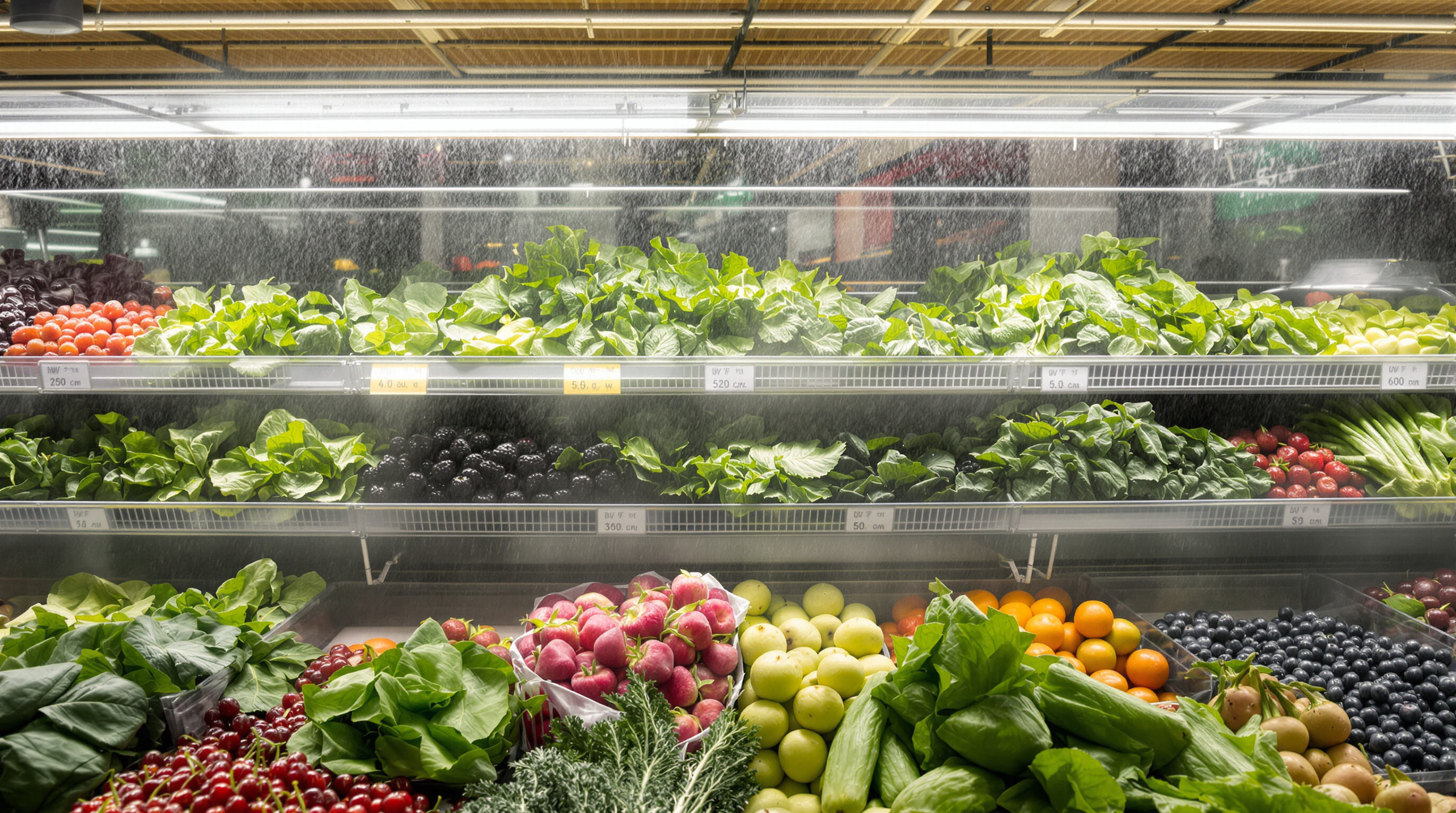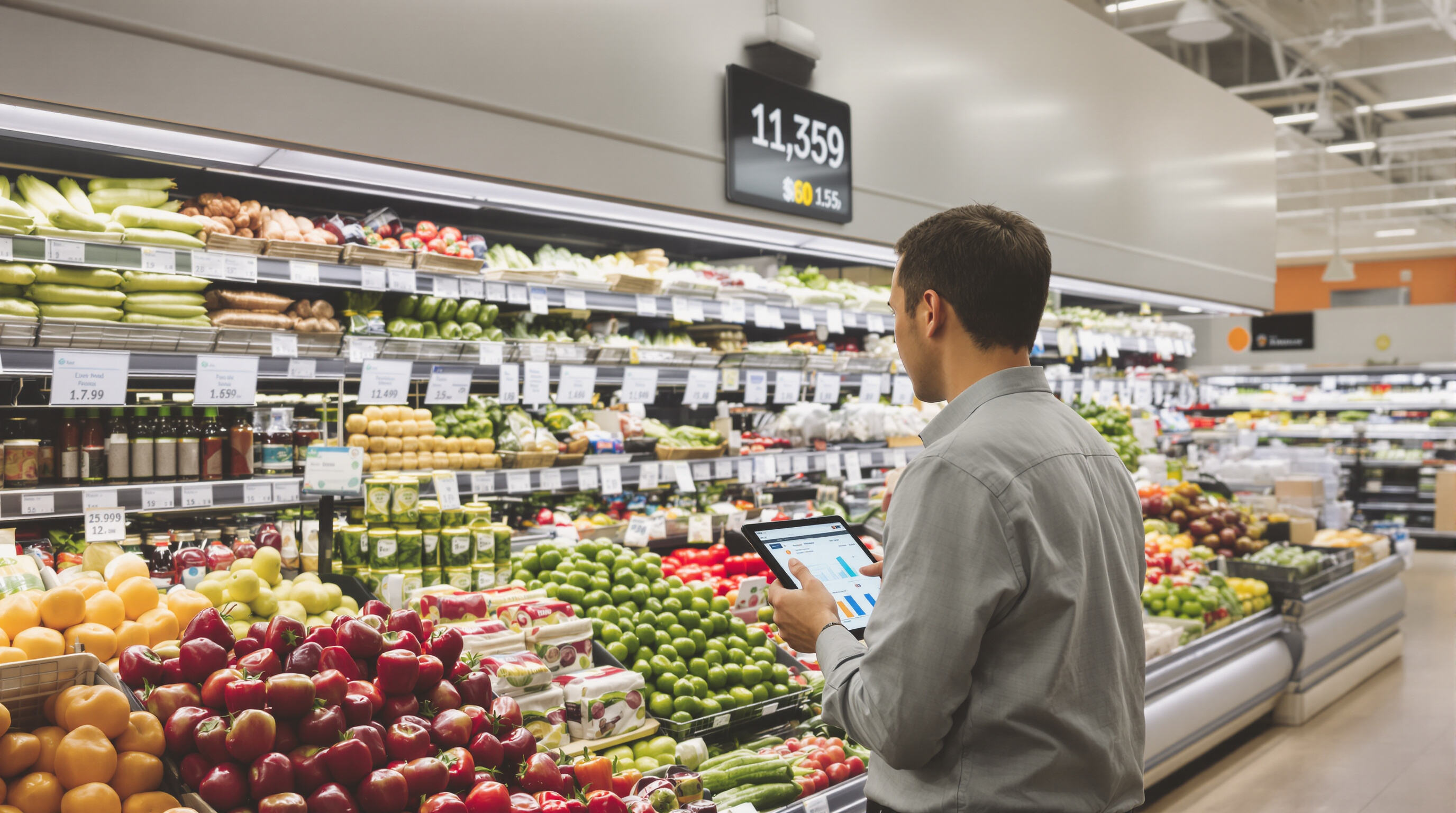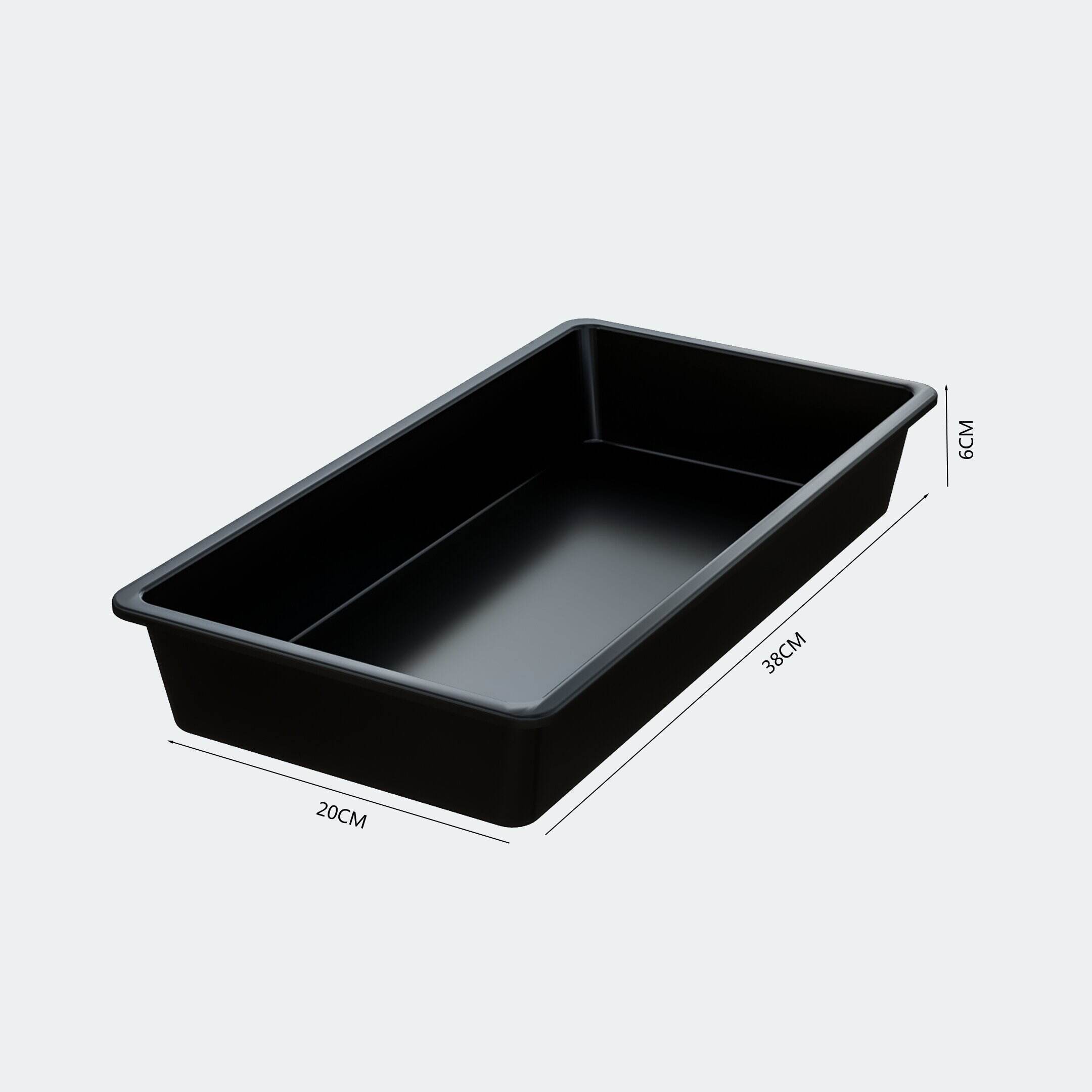Optimize Fresh Produce Display Layouts with Trays and Dividers
The Role of Display Organization with Trays, Dividers, and Shelving to Reduce Damage and Improve Freshness
When it comes to keeping produce fresh, structured display systems make a real difference. Studies show they cut down on bruising and spoilage somewhere between 18 to 24 percent compared to just throwing stuff in any old way (Produce Business reported this back in 2023). The foam dividers and those specially angled shelves actually work wonders for soft fruits such as peaches and tomatoes that tend to get smashed when piled haphazardly. These displays stop them from knocking around so much. Then there are these trays with tiny holes all over them. They let air circulate better which means berries stay fresh longer maybe an extra two or three days in total. Plus these same trays catch any juice that might leak out and help keep different items from getting contaminated with each other.
Using Pork Trays for Multi-Use Modular Produce Presentation
Standardized 12"–18" polypropylene pork trays are being repurposed as modular produce displays. Their uniform design supports secure stacking of leafy greens and round fruits, improving visual consistency and space efficiency. Retailers can rotate these trays between meat and produce departments, reducing packaging costs by $0.11 per pound through reuse and standardization.
Modular and Flexible Display Units for Space Optimization and Cross-Merchandising
Adjustable dividers allow staff to reconfigure displays in under 90 seconds, adapting to seasonal items or promotional campaigns. A 2024 case study found that curved basket systems increased cross-merchandising sales by 19% when pairing avocados with lime wedges, demonstrating how layout flexibility drives basket expansion.
Case Study: Supermarket Chain Reduces Produce Bruising by 32% Using Structured Tray Systems
Midwest Grocers implemented foam-lined tray systems across 48 stores, cutting apple waste from 9.2% to 6.3% in inventory loss. The redesign paid for itself within 11 months through reduced shrink and a 14% increase in impulse purchases at checkout displays.
Control Humidity and Temperature to Maximize Freshness and Minimize Shrink

Reducing produce shrink and waste through humidity control
Keeping humidity levels around 85 to 95 percent works wonders for leafy greens and berries, slowing down water loss and those pesky enzymes that break things down. About 40% of fresh produce gets tossed out each year because it wasn't stored right, so this matters a lot. Studies indicate that when we control humidity properly, dehydration drops by about 25% compared to regular fridge storage, which means products stay heavier and look better too. Retailers are seeing results from high pressure fogging systems these days. These setups cut shrinkage by roughly 18% on herbs and greens by spreading tiny water droplets throughout the display area without making everything soggy. The trick is getting just enough moisture where it's needed without overdoing it.
Key guidelines by category:
- Leafy vegetables: 95% humidity prevents wilting; pair with antimicrobial airflow to inhibit pathogens
- Root vegetables: 90% humidity maintains turgor while minimizing mold risk
- Citrus fruits: 85% humidity preserves peel quality during extended storage
Automated humidity sensors now correct fluctuations in real time, eliminating 32% of waste previously caused by human error in manual calibration.
Leverage AI for Accurate Demand Forecasting and Inventory Optimization

AI Models for Demand Forecasting to Reduce Food Waste in Retail
Forecasting tools powered by artificial intelligence look at past sales numbers, seasonal patterns, and even things like weather conditions to figure out what customers will want next. The accuracy rate is pretty impressive too, hitting around 90% most of the time. When stores match their buying habits to what people actually consume day to day, they end up with fewer extra products sitting on shelves and significantly less food going bad. Some studies show this approach cuts down on wasted food by somewhere between 18% and 26%. These smart systems pick up on all sorts of little details that humans might miss, like how demand for avocados jumps every Saturday morning at certain grocery chains. This kind of insight lets managers adjust stock levels before problems happen rather than after the fact.
Machine Learning for Waste Prevention and Inventory Optimization
Advanced algorithms automate replenishment by syncing shelf-level inventory with expiration dates. One system reduced spoilage by 22% by flagging older stock for priority promotion. Real-time dashboards notify staff when perishable items like berries or greens approach freshness thresholds, enabling timely markdowns or donation coordination.
Demand Forecasting and Real-Time Stock Rotation in Fresh Produce Sections
IoT sensors integrated with AI platforms monitor temperature, humidity, and remaining shelf life across display zones. When lettuce in Zone 3 reaches 70% of its freshness window, the system automatically routes replacement stock from cool storage and triggers discount alerts for existing units–reducing shrink by up to 35%.
Case Study: AI Implementation Cuts Overstock by 27% in Regional Grocery Chain
A grocery store chain somewhere in the Midwest started using machine learning models after feeding them 12 months worth of sales records plus information from local events happening around town. After just half a year, they saw their overstock problems shrink by almost a third, down 27%, yet still kept shelves stocked at 99% for popular products such as those organic apples and ready made salads customers love so much. Their dynamic pricing system was another game changer, bringing back about eighteen grand every week that would have otherwise been lost money through smart markdown adjustments tied directly to how fresh produce actually looked on store shelves.
FAQ
-
How do structured display systems contribute to reducing produce spoilage?
Structured display systems help reduce bruising and spoilage by up to 24% by using trays and dividers that improve air circulation and prevent produce from knocking around. -
Why are pork trays used in fresh produce displays?
Pork trays are repurposed for produce displays due to their uniform design, which supports secure stacking and improves visual consistency, thus saving on packaging costs. -
What role does humidity control play in reducing produce waste?
Proper humidity control helps maintain optimal moisture levels, reducing shrinkage and dehydration, thus extending the freshness of produce. -
How can AI improve demand forecasting in grocery stores?
AI models can predict customer demand with about 90% accuracy by analyzing past sales, seasonal patterns, and local events, reducing overstock and food waste.
Table of Contents
-
Optimize Fresh Produce Display Layouts with Trays and Dividers
- The Role of Display Organization with Trays, Dividers, and Shelving to Reduce Damage and Improve Freshness
- Using Pork Trays for Multi-Use Modular Produce Presentation
- Modular and Flexible Display Units for Space Optimization and Cross-Merchandising
- Case Study: Supermarket Chain Reduces Produce Bruising by 32% Using Structured Tray Systems
- Control Humidity and Temperature to Maximize Freshness and Minimize Shrink
- Leverage AI for Accurate Demand Forecasting and Inventory Optimization
- FAQ

